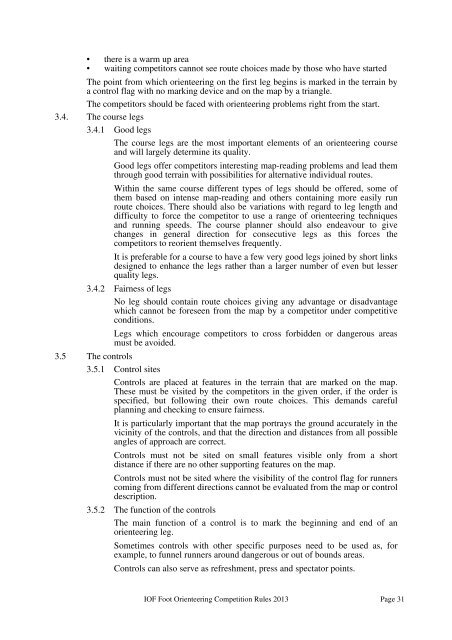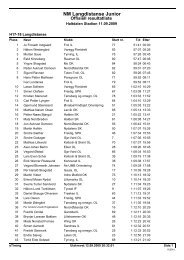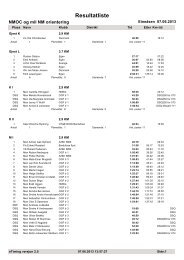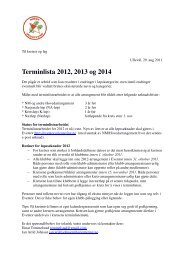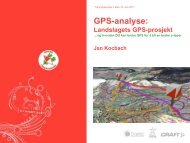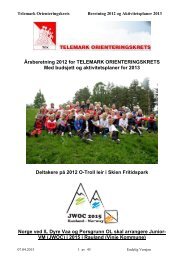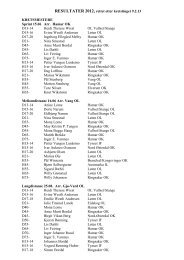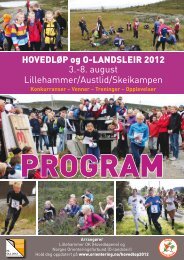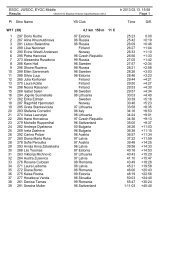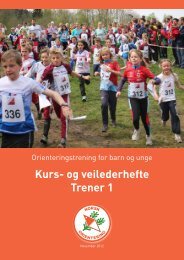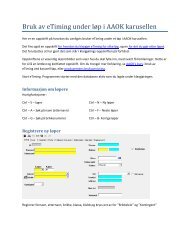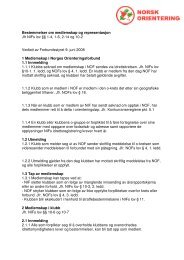Rules for the Orienteering event in - International Orienteering ...
Rules for the Orienteering event in - International Orienteering ...
Rules for the Orienteering event in - International Orienteering ...
Create successful ePaper yourself
Turn your PDF publications into a flip-book with our unique Google optimized e-Paper software.
• <strong>the</strong>re is a warm up area• wait<strong>in</strong>g competitors cannot see route choices made by those who have startedThe po<strong>in</strong>t from which orienteer<strong>in</strong>g on <strong>the</strong> first leg beg<strong>in</strong>s is marked <strong>in</strong> <strong>the</strong> terra<strong>in</strong> bya control flag with no mark<strong>in</strong>g device and on <strong>the</strong> map by a triangle.The competitors should be faced with orienteer<strong>in</strong>g problems right from <strong>the</strong> start.3.4. The course legs3.4.1 Good legsThe course legs are <strong>the</strong> most important elements of an orienteer<strong>in</strong>g courseand will largely determ<strong>in</strong>e its quality.Good legs offer competitors <strong>in</strong>terest<strong>in</strong>g map-read<strong>in</strong>g problems and lead <strong>the</strong>mthrough good terra<strong>in</strong> with possibilities <strong>for</strong> alternative <strong>in</strong>dividual routes.With<strong>in</strong> <strong>the</strong> same course different types of legs should be offered, some of<strong>the</strong>m based on <strong>in</strong>tense map-read<strong>in</strong>g and o<strong>the</strong>rs conta<strong>in</strong><strong>in</strong>g more easily runroute choices. There should also be variations with regard to leg length anddifficulty to <strong>for</strong>ce <strong>the</strong> competitor to use a range of orienteer<strong>in</strong>g techniquesand runn<strong>in</strong>g speeds. The course planner should also endeavour to givechanges <strong>in</strong> general direction <strong>for</strong> consecutive legs as this <strong>for</strong>ces <strong>the</strong>competitors to reorient <strong>the</strong>mselves frequently.It is preferable <strong>for</strong> a course to have a few very good legs jo<strong>in</strong>ed by short l<strong>in</strong>ksdesigned to enhance <strong>the</strong> legs ra<strong>the</strong>r than a larger number of even but lesserquality legs.3.4.2 Fairness of legsNo leg should conta<strong>in</strong> route choices giv<strong>in</strong>g any advantage or disadvantagewhich cannot be <strong>for</strong>eseen from <strong>the</strong> map by a competitor under competitiveconditions.Legs which encourage competitors to cross <strong>for</strong>bidden or dangerous areasmust be avoided.3.5 The controls3.5.1 Control sitesControls are placed at features <strong>in</strong> <strong>the</strong> terra<strong>in</strong> that are marked on <strong>the</strong> map.These must be visited by <strong>the</strong> competitors <strong>in</strong> <strong>the</strong> given order, if <strong>the</strong> order isspecified, but follow<strong>in</strong>g <strong>the</strong>ir own route choices. This demands carefulplann<strong>in</strong>g and check<strong>in</strong>g to ensure fairness.It is particularly important that <strong>the</strong> map portrays <strong>the</strong> ground accurately <strong>in</strong> <strong>the</strong>vic<strong>in</strong>ity of <strong>the</strong> controls, and that <strong>the</strong> direction and distances from all possibleangles of approach are correct.Controls must not be sited on small features visible only from a shortdistance if <strong>the</strong>re are no o<strong>the</strong>r support<strong>in</strong>g features on <strong>the</strong> map.Controls must not be sited where <strong>the</strong> visibility of <strong>the</strong> control flag <strong>for</strong> runnerscom<strong>in</strong>g from different directions cannot be evaluated from <strong>the</strong> map or controldescription.3.5.2 The function of <strong>the</strong> controlsThe ma<strong>in</strong> function of a control is to mark <strong>the</strong> beg<strong>in</strong>n<strong>in</strong>g and end of anorienteer<strong>in</strong>g leg.Sometimes controls with o<strong>the</strong>r specific purposes need to be used as, <strong>for</strong>example, to funnel runners around dangerous or out of bounds areas.Controls can also serve as refreshment, press and spectator po<strong>in</strong>ts.IOF Foot <strong>Orienteer<strong>in</strong>g</strong> Competition <strong>Rules</strong> 2013 Page 31


